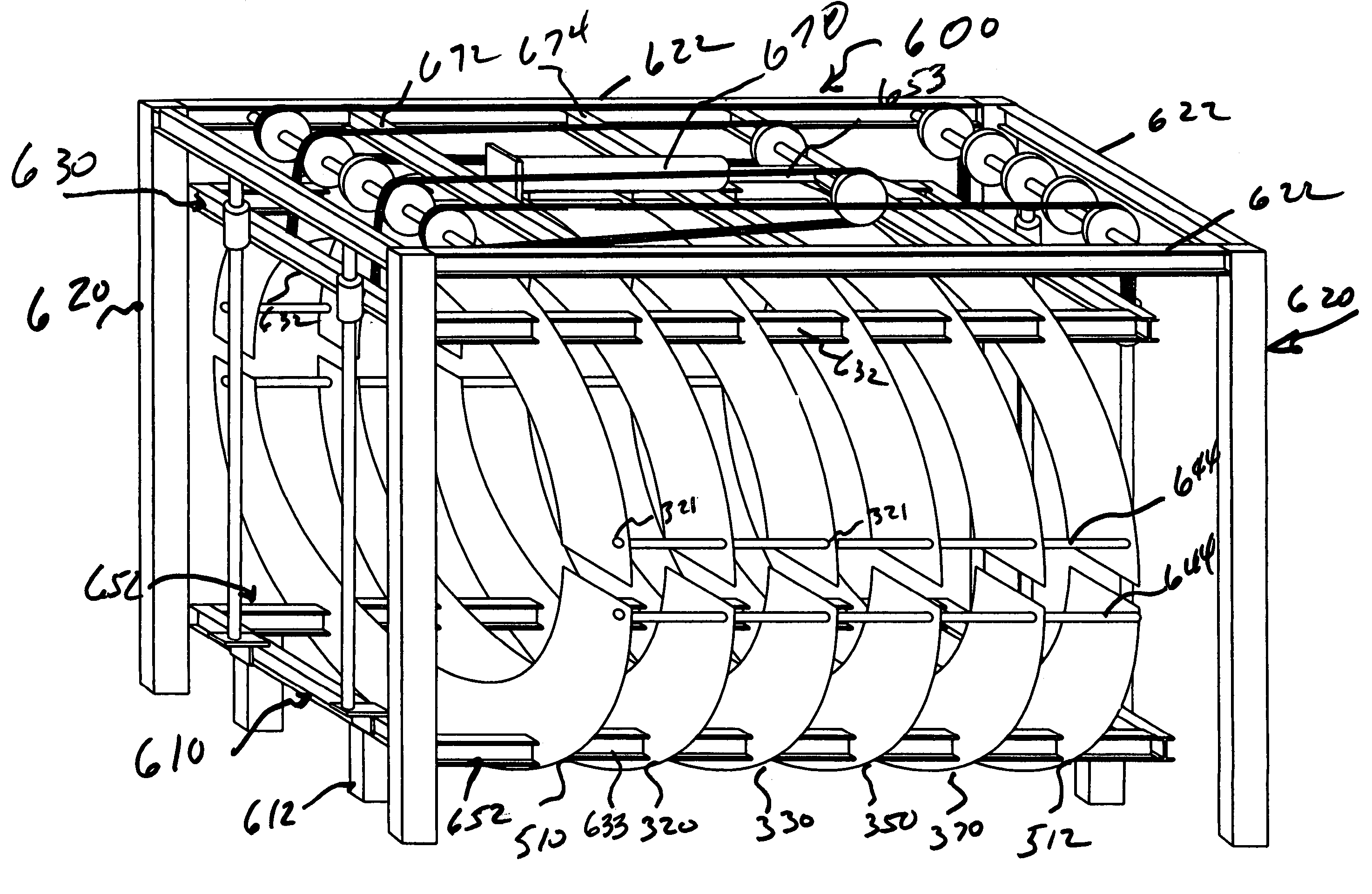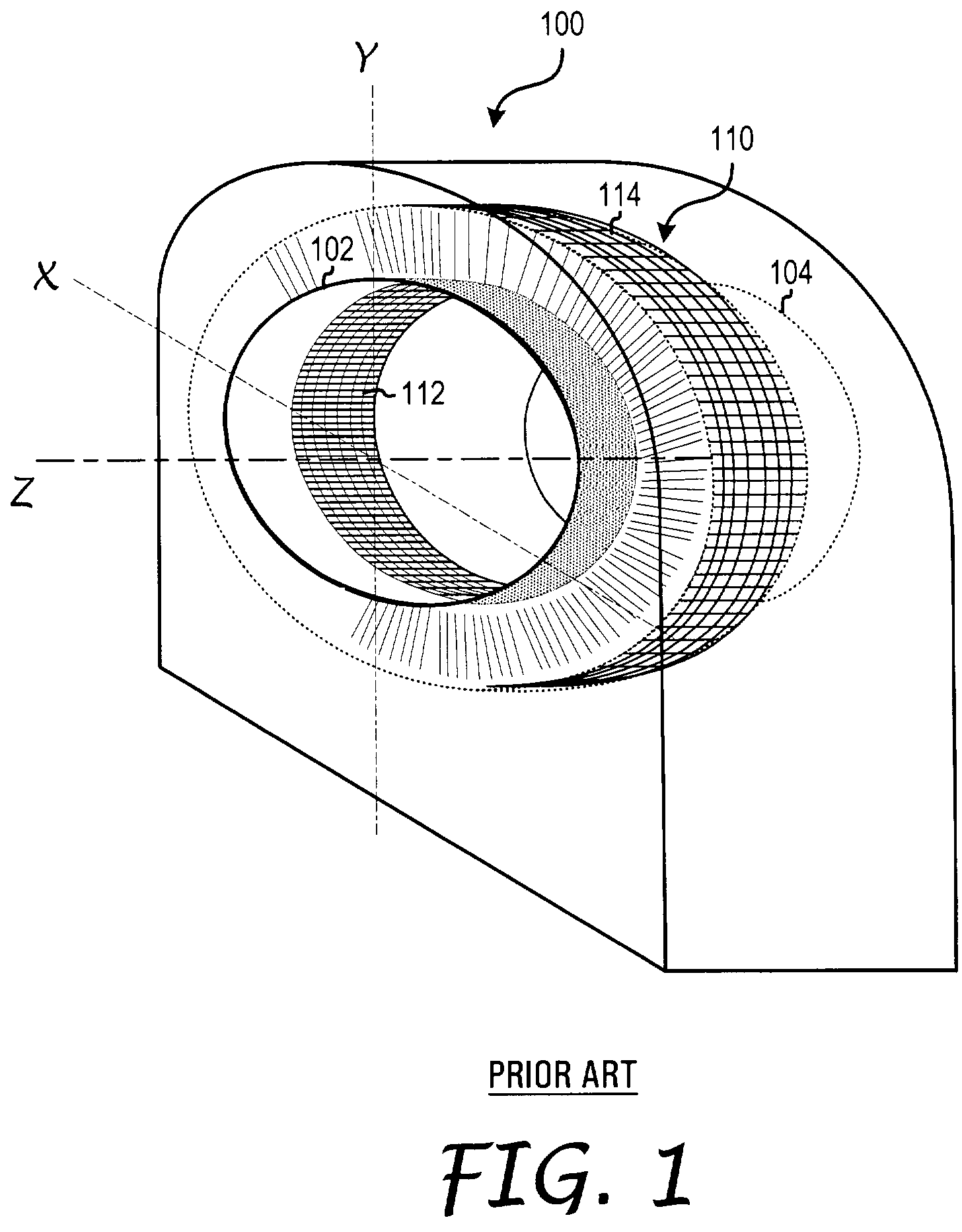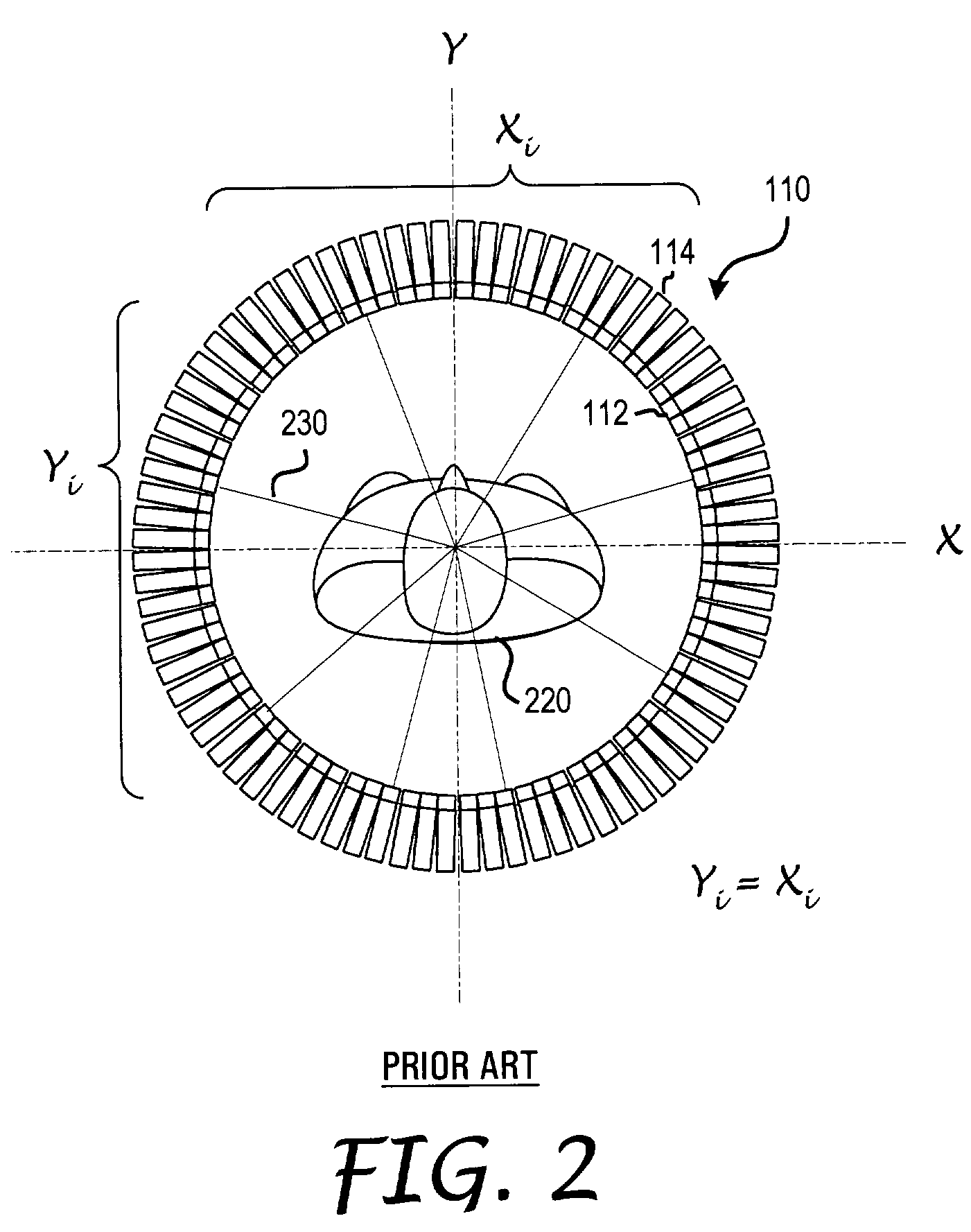Gantry for geometrically configurable and non-configurable positron emission tomography detector arrays
a positron emission tomography and geometrically configurable technology, applied in tomography, applications, instruments, etc., can solve the problems of poor image quality, low device efficiency, sticking, etc., and achieve the effect of facilitating patient entry and/or scan
- Summary
- Abstract
- Description
- Claims
- Application Information
AI Technical Summary
Benefits of technology
Problems solved by technology
Method used
Image
Examples
example
[0044]An exemplary gantry as shown in FIG. 6, which accommodates detectors of different type and shape, was built in approximately one month, working part time and spending only $5,000 in material. FIGS. 3A, 3B, 4, and 5 show the construction of the support of the detector. The rectangular hole in the two semi-arcs is accommodating the I beam of the gantry and is where the weight of the detector is laying. The six round holes (three on the top semi arc and three on the bottom semi arc) are used to accommodate a tube which is solid to the gantry and has a clamp at each semi arc that provides a rigid position of the arc with respect to the gantry.
[0045]An advantage of this construction is that it will help to increase the flexibility in using different types of detector geometries and materials and it lowers the cost of the overall PET because of its simple design. The construction is safe for the patient: e.g., it can accommodate 3-cm thick BGO or LSO detectors assembled in many bloc...
PUM
 Login to View More
Login to View More Abstract
Description
Claims
Application Information
 Login to View More
Login to View More - R&D
- Intellectual Property
- Life Sciences
- Materials
- Tech Scout
- Unparalleled Data Quality
- Higher Quality Content
- 60% Fewer Hallucinations
Browse by: Latest US Patents, China's latest patents, Technical Efficacy Thesaurus, Application Domain, Technology Topic, Popular Technical Reports.
© 2025 PatSnap. All rights reserved.Legal|Privacy policy|Modern Slavery Act Transparency Statement|Sitemap|About US| Contact US: help@patsnap.com



